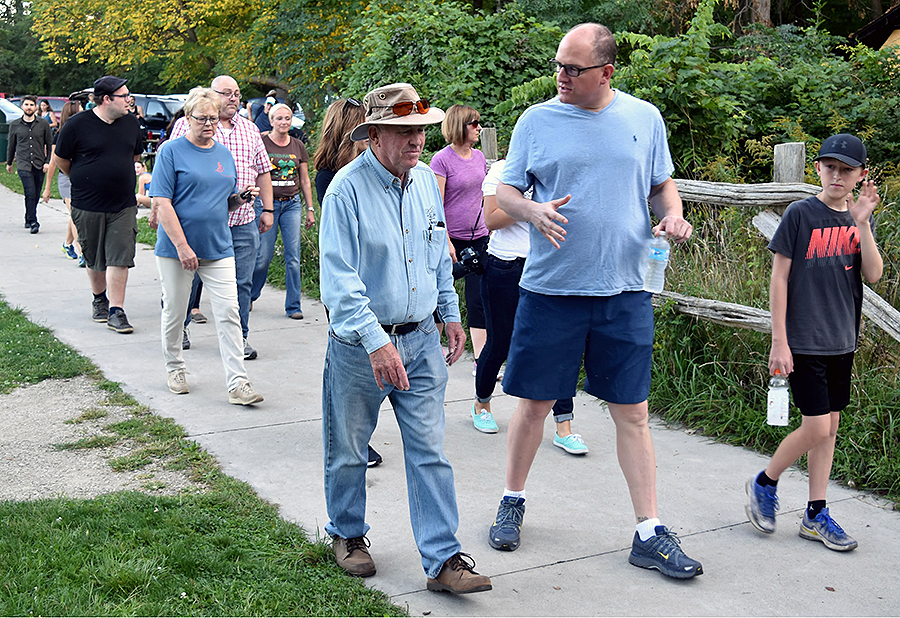Last Missing Piece

Windsor mayor Drew Dilkens addresses questions and concerns of Ward 1 residents at Ojibway Nature Centre on Wednesday, Sept. 20, 2017. (By Alyssa Leonard).
By Alyssa Leonard
Windsor’s mayor hopes to acquire what he considers the last missing piece of the Ojibway Prairie Complex — this pleased many of the 25 residents who took part in Mayor Drew Dilkens’ Ward 1 walk at the Ojibway Nature Centre on Sept. 20.
Dilkens said the city is currently focusing on acquiring Ojibway Shores, an undeveloped patch of land at the corner of Broadway Boulevard and Sandwich Street. According to a report released by the Essex County Field Naturalist’s Club and the Essex Region Conservation Authority, the 33.6 acre lot has approximately 500 linear metres of natural (undeveloped) shoreline.
The city has set aside $1.5 million for the property currently owned by the Windsor Port Authority. Dilkens said they hope to obtain the land and link Ojibway Shores with the rest of the prairie complex that the city already owns.
“That’s the last missing piece left for the Ojibway Complex,” said Dilkens. “Once we have that piece then we can start figuring out how to connect [all of the complex] in a very functional way and make it a more exciting nature area.”
Among the city residents in attendance were members from Friends of Ojibway Prairie, a volunteer organization dedicated to educating people about the Ojibway Prairie Complex. Ella Walker is the treasurer of the organization.
“It would be lovely to have Ojibway Shores become part of the Ojibway Prairie Complex,” said Walker. “It would be protected for all time.”
Gary Malloy was at the Ojibway Nature Centre and Park coaching his University of Windsor Lancers cross-country team just before the Ward 1 walk. He said his team has been coming to Ojibway for 25 to 30 years for training and practice. Malloy said he brings his team to Ojibway a few times a year, a welcomed change of pace from Malden Park.
“There’s a mile loop here that we like to do just to get some speed in before races,” said Malloy. “Especially on a hot day, it’s nice — it’s one of the only shady places in Windsor to run when it’s hot.”
The tallgrass prairie once covered 23 per cent of North America. With less than half a per cent remaining in Southern Ontario, Ojibway is home to one of the largest areas left. The complex is currently home to 160 species of provincially rare, threatened and endangered plants and animals.
An activist group, known as Friends of Save Ojibway, has been fighting for more than a decade to protect and preserve the Prairie Complex. Last May they lost a battle with city council to close Matchette Road in an attempt to protect all 22 endangered species in the Ojibway Nature Centre, a number that has doubled since 2009.
Nancy Pancheshan, with Save Ojibway, attended the ward walk and said she hopes to educate residents and city council to act before it is too late.
“Over 100,000 people visit this park every year,” said Pancheshan. “By preserving it, it will benefit not only Windsor but Ontario and Canada because it’s a globally endangered ecosystem.”
Malloy, who’s been visiting the nature centre since he was four years old, said people should do everything they can to preserve natural spaces, especially multi-purpose ones like Ojibway.
“It’s a beautiful oasis of green in a concrete city. Why wouldn’t we want to preserve it?”


